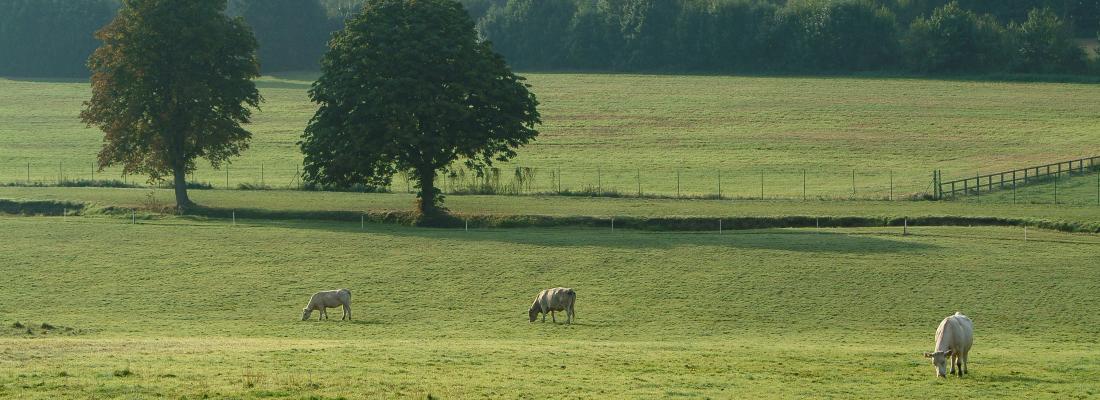Agroecology Reading time 5 min
Sustainably feeding the world requires efficient nitrogen use
Published on 28 September 2023

The ability of agriculture to feed the global human population is shaped by two key factors: the total amount of farmland and the quantity of food produced per hectare, which together determine the so-called “food yield”. At present, agricultural systems occupy nearly 40% of the Earth’s ice-free land area, representing a 10-fold increase over the last 2,000 years. However, it is simply unsustainable to continue expanding the percentage of the Earth dedicated to agriculture. Thus, further increase in the global feeding capacity should be driven by increased food yield, which is shaped by the availability of nutrients, especially nitrogen, and limited by the physiological constraints of crop and livestock species.
Across the globe, nitrogen availability and food production have climbed dramatically since synthetic nitrogen fertilizers first emerged in the early 20th century. Their use has increased per-hectare productivity, leading world population growth to become uncoupled from the quantity of farmed surface area. When combined with nitrogen use inefficiency within agricultural systems, this situation has triggered massive pollution at a global scale, with adverse effects on the climate, water quality, air quality, biodiversity, ecosystem services, and human health.
To explore the effects of organic versus industrial fertilization on the Earth’s feeding capacity, the researchers developed a model that examines the impacts of key factors related to food production and nitrogen pollution.
The results revealed that the current agricultural surface area could feed 8–20 billion people under industrial fertilization regimes or 3–14 billion people under organic fertilization regimes. These estimates are primarily determined by three variables: 1) competition between food and feed production, which is driven by the composition of human diets; 2) allocation of agricultural area to grasslands versus croplands; and 3) nitrogen use efficiency, in the case of organic fertilization. Within this framework, feeding capacity is a planetary characteristic, and spatial heterogeneity arising from regional agricultural specialization (i.e., local surpluses and deficits) is dampened by the effects of global trade.
The researchers’ findings also highlight that livestock farming has an important, two-faceted role to play. Specifically, the Earth’s feeding capacity is maximized when there is no competition between the production of human food and animal feed. Additionally, feeding capacity estimates are inversely correlated with the percentage of animal proteins in human diets, such that improvements in feeding capacity are seen when lesser amounts of animal proteins are consumed (i.e., reductions of 20–43%). However, the solution is not for the world to adopt a vegan diet. Instead, feeding capacity can be maximised via livestock farming systems that utilize grasslands and crop residues. In addition, livestock production significantly helps balance the supply of nitrogen from animals with the demand for nitrogen from crops. Livestock farming yields precious fertilizer that can be applied to croplands, especially as part of organic agricultural practices. Under all circumstances, for a given agricultural surface area, increases in per-hectare productivity furnish benefits that can be reinvested so as to both boost feeding capacity and replace croplands by grasslands, a shift that will, in turn, enhance carbon sequestration and ecosystem services.
A major challenge in the 21st century is improving the Earth’s feeding capacity while also increasing nitrogen use efficiency. To successfully accomplish this task, we must strike a balance among global population growth, shifts in arable land use, and nitrogen dynamics, with a view to reducing pollution and increasing sustainability at a planetary scale. Against this backdrop, increasing nitrogen use efficiency will be essential to reducing food productivity gaps between organic and industrial agricultural systems. Livestock farming can serve as an effective tool in this demanding work, as long as systems prioritize grasslands and crop residues as feed sources.
Chatzimpiros, P.; Harchaoui, S., 2023. Sevenfold variation in global feeding capacity depends on diets, land use and nitrogen management. Nature Food: 24. http://dx.doi.org/10.1038/s43016-023-00741-w
